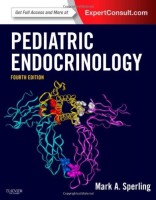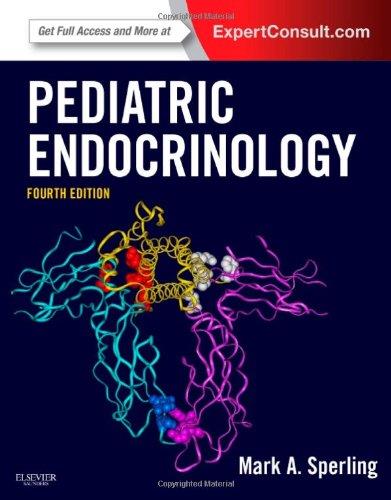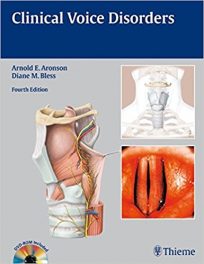 Editor: Mark A. Sperling, MD
Editor: Mark A. Sperling, MD
Publisher: Elsevier Saunders – 1061 pages
Book Review by: Nano Khilnani
This book provides basic science as well as clinical-practice information and valuable insight from world-renowned specialists on many issues in pediatric endocrinology. It has been written for pediatricians and endocrinologists, as well as for medical students and fellows.
Fifty-eight experts in the United States and Canada, Israel, Slovenia, Switzerland, and United Kingdom have contributed content to this fourth edition of this definitive resource on various aspects of this medical specialty to this voluminous text of over a thousand pages.
Key developments in the various areas of this field are provided that can guide you in your clinical decision-making. Online access to the entire contents of this book as well as current information is provided to you so you can derive maximum benefit in a timely manner.
The material in this book is presented in 23 chapters organized around three Sections, which are:
- Principles and Methods of Pediatric Endocrinology
- Endocrine Disorders in the Neonate
- Endocrine Disorders in Children and Adolescents
The first Section has four chapters which provide you an overview and principles of pediatric endocrinology; molecular endocrinology and endocrine genetics; receptor transduction pathways mediating hormone action; and laboratory methods in this field.
The second Section with five chapters covers these topics: ambiguous genitalia; hypoglycemia in the newborn and infant; disorders of the thyroid in the newborn and infant; disorders of calcium and phosphorus; and neonatal diabetes mellitus
The third Section, the longest with 14 chapters, covers a range of disorders and syndromes including secretion, the posterior pituitary and thyroid glands, and the adrenal cortex; pheochromocytoma and multiple endocrine neoplasia syndrome; puberty and its disorders in the female and the male; Turner syndrome; disorders of mineral homeostasis; diabetes mellitus; autoimmune polyglandular syndromes; hypoglycemia; obesity, metabolic syndrome and disorders of energy balance; and lipid disorders.
What are some of the important tasks you will be able to do with this fourth edition?
- Determine the best possible course for every patient with easy-to-follow algorithms in every clinical chapter.
- Explore the impact of today’s advances and challenges, including explosive growth in molecular biology and sophisticated imaging techniques, and an increase in pediatric diabetes and obesity.
- Quickly access the information you need with a new, streamlined organization (Principles and Methods, Endocrine Disorders in the Neonate, and Endocrine Disorders in Children and Adolescents).
- Stay up to date with today’s hottest topics, including neonatal diabetes mellitus, Type II childhood diabetes, molecular endocrinology, and genetics.
- New – Access the fully searchable contents of the book and the new self-assessment questions online at www.expertconsult.com.
To access the online resources, go to the above website and do the following:
- Login or sign up
- Scratch off the PIN code on the inside front cover of your book
- Enter the PIN into the Redeem a Book Code box
- Click Redeem
- Go to My Library
Compatible with PC, Mac, most mobile devices and e-Readers, Expert Consult enables you to browse, search, and interact with this title – online and offline. Here are some of the benefits:
- Seamless, real-time integration between devices
- Straightforward navigation and search
- Notes and highlights sharing with other users through social media
- Enhanced images with annotations, labels, and hot spots for zooming on specific details*
- Live streaming video and animations*
- Self-assessment tools such as questions embedded within the text and multiple-format quizzes (* Some features vary by title)
Organization of content in the chapters is simple, straightforward and effective. A Chapter Outline is provided at the beginning of each chapter, with the topics covered in it. For example chapter 1entitled Overview and Principles of Pediatric Endocrinology provides the following topics in the Chapter Outline:
- Historical Background
- Impact of Hormonal Assays and Molecular Biology
- Unique Aspects of Pediatric Endocrinology (with three subtopics)
- Evaluating Endocrine Disorders in Infancy and Childhood
- Concluding Remarks
Among the study aids used in the chapters are: charts and figures with extensive captions; photographs of microscopic materials; and tables arraying data and other information enabling quicker understanding of problems. A Summary is provided at the end of each chapter, followed by lists of References for your further study.
Mark A. Sperling, MD is Professor and Chair Emeritus of the Department of Pediatrics at the University of Pittsburgh School of Medicine. He is also affiliated with the Division of Endocrinology, Metabolism and Diabetes Mellitus at the Children’s Hospital of Pittsburgh in Pittsburgh, Pennsylvania.







